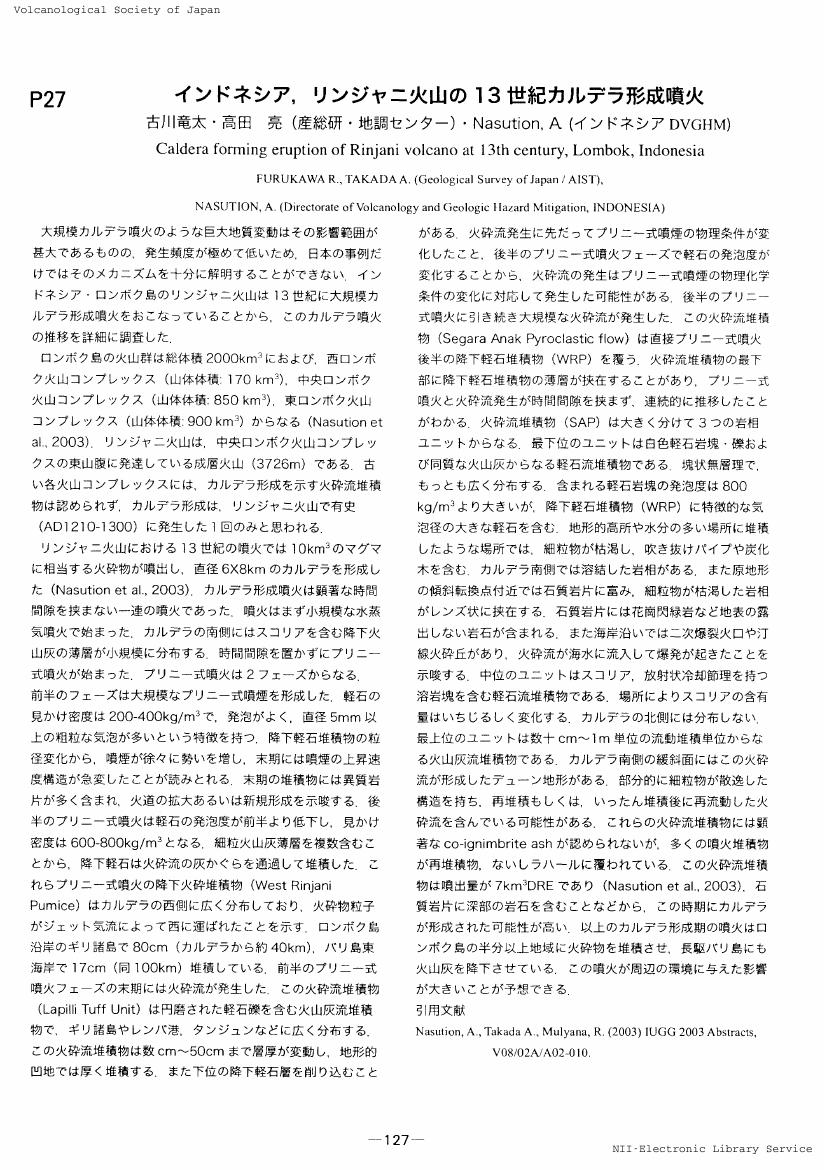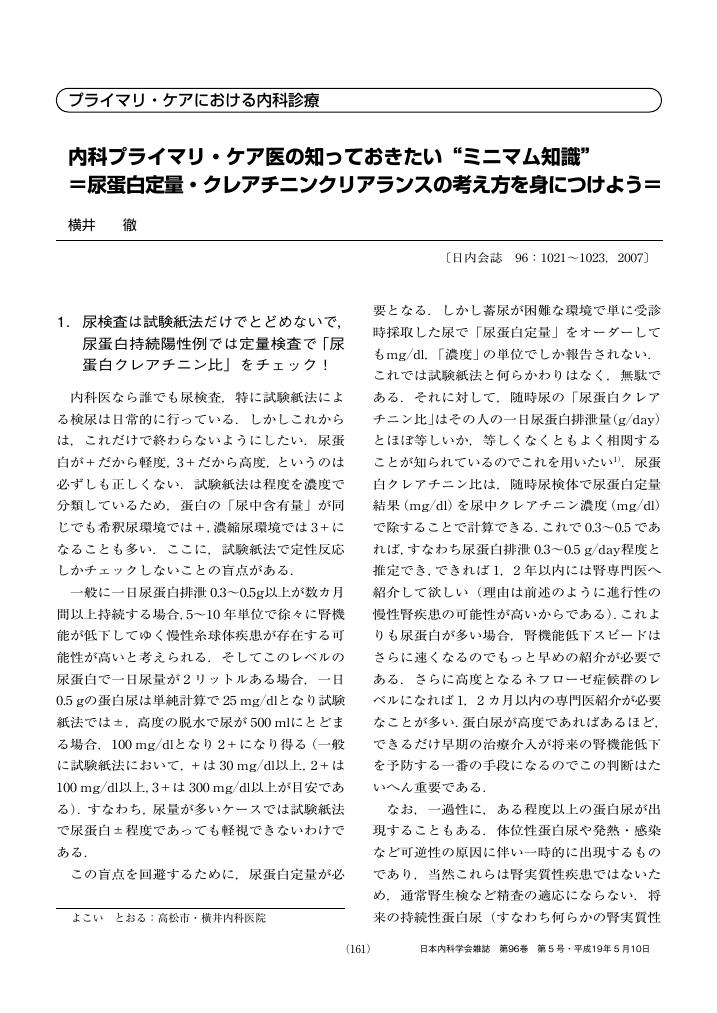- 出版者
- 日経BP社
- 雑誌
- 日経エレクトロニクス (ISSN:03851680)
- 巻号頁・発行日
- no.1129, pp.61-66, 2014-03-03
「似たようなゲーム機ながら、半導体部品に対するアプローチがここまで異なるのは興味深い」─。ソニー・コンピュータエンタテインメント(SCE)の「PlayStation(PS)4」と米Microsoft社の「Xbox One」の半導体を解析したある技術者(以下、解析協力者)の感想だ。 …
1 0 0 0 OA 座長のまとめ
- 著者
- 梅村 和夫 和田 孝一郎
- 出版者
- 一般社団法人 日本臨床薬理学会
- 雑誌
- 臨床薬理 (ISSN:03881601)
- 巻号頁・発行日
- vol.42, no.2, pp.63-64, 2011 (Released:2011-06-30)
1 0 0 0 OA 痲疹輯要
- 著者
- 西田耕悦
- 出版者
- 河内屋木兵衛[ほか3名]
- 巻号頁・発行日
- 1822
1 0 0 0 ベトナム戦争と帰還兵詩人
- 著者
- 白井 洋子
- 出版者
- 日本女子大学
- 雑誌
- 日本女子大学紀要. 文学部 (ISSN:02883031)
- 巻号頁・発行日
- vol.60, pp.63-51, 2011-03-20
- 著者
- 古川 竜太 高田 亮 A. NASUTION
- 出版者
- 特定非営利活動法人 日本火山学会
- 雑誌
- 日本火山学会講演予稿集 2005 (ISSN:24335320)
- 巻号頁・発行日
- pp.127, 2005-10-05 (Released:2017-02-10)
1 0 0 0 メタモデル進化に対するモデル変換共進化手法
- 著者
- 権藤 晃徳 岸 知二
- 雑誌
- ソフトウェアエンジニアリングシンポジウム2013論文集
- 巻号頁・発行日
- vol.2013, pp.1-8, 2013-09-02
- 著者
- 西村 敬史
- 出版者
- 公益財団法人 日本心臓財団
- 雑誌
- 心臓 (ISSN:05864488)
- 巻号頁・発行日
- vol.37, no.3, pp.67-67, 2005
心房細動は特殊な場合を除いて心臓性急死を来す疾患ではないが,ときに治療目的に投与された抗不整脈薬による心臓性急死が発生することが知られている.しかしリズムコントロールを行った自験218例(平均年齢68.9歳,平均観察期間17.6カ月)において1例の心臓性急死も発生せず,心室細動,持続性心室頻拍,TdPも認めなかった.3例を失ったが,その死因は急性心筋梗塞,肺炎,腎細胞癌であった.<BR>心臓性急死のみられなかった理由として,リズムコントロールを行う症例の選択,抗不整脈薬の投与量,併用薬の選択,外来における心電図記録や電解質検査を適切に行うことが重要であると考えられた.さらに洞調律維持が困難な症例を"深追い"せず心拍数コントロールへ変更する判断も重要であると考えられた.<BR>心房細動に対するリズムコントロール治療は,それを適切に行うことで治療に伴う心臓性急死は予防可能であり,多くの症例に対する第一選択の治療となり得る.
- 著者
- 侯 巧紅
- 出版者
- 桃山学院大学
- 雑誌
- 桃山学院大学人間科学 (ISSN:09170227)
- 巻号頁・発行日
- no.35, pp.251-305, 2008-07-07
In the Dazhidulun (大智度論), Indra tests King Sibi in order to discover a future Buddha. He is so persistent as to demand that he perform an observance called "declaration of the truth" (satya-vacana), which is handed down in Indian literary tradition. The Indians believe that a supernatural power subsists in the truth (satya) to work a miracle in an urgent crisis. It is when the truth is verbally expressed that a miracle takes effect. Insisting that he really intends to become a Buddha, King Sibi declares, "If your words should be true, may my broken body be restored." As soon as he speaks, his body is restored. Thus his words prove to be true. Indra is at last convinced that King Sibi earnestly wishes to becomea Buddha.On the other hand, in the Liudujijing (六度集經), Indra is only anxious about his own future and he is contented unless the king aims at the position of Indra. He is soon restored the injured body of the king after applying celestial medicine to him. The two versions of the story of King Sibi are thus incompatible with each other.The story of King Sibi was introduced into Japan from China. We find it told in three narrative collections in different ages, first in the Sanboe(三寶繪) of 984, next in the Kingenruijusho(金言類聚抄), the date of which seems to be sometime bwetween the late 11th century and the early 13th century, and last in the Sangokudenki (三國傳記) of the first half of the15th century.Minamoto-no-Tamenori (源爲憲), the compiler of the Sanboe, uses both the Dazhidulun and the Liudujijing, the two Chinese texts incompatible with each other, when he tells the story of´Sibi. He mostly follows the text of the Dazhidulun. Oddly enough, however, he does not notice the declaration of the truth as performed by the king. He is ignorant of this observance, well-known in Buddhist tradition. Without declaring the truth, the king in this version gets by on Indra's test when celestial medicine is applied to his damaged body. We do not know whether this Indra is eager to find a future Buddha or merely anxious about his own future. As a mixture of the two sources incompatible with each other, the story of King Sibi in the Sanboe is in confusion.Tanro(潭朗), the compiler of the Kingenruijusho(金言類聚抄), also tries to follow the text of the Dazhidulun when he tells the story of King Sibi. However, he does not read this Chinese text correctly. Like the compiler of the Sanboe, he does not know the motive of Indra for testing the king, nor does he know that Indra intends to evoke a declaration of the truth. Unlike Minamoto-no-Tamenori, he does not refer to celestial medicine when the king recovers, because he sticks to the Dazhidulun text. This story is also in confusion.Different from the two preceding Japanese versions, the story of Sibi as told by Gento(玄棟), the compiler of the Sangokudenki (三國傳記), does not follow any Chinese text. Except for the core of the story, King Sibi's gradual abandonment of his body, there is nothing that reminds us of a Chinese source. Words describing the characters who appear on the stage are all familiar to the Japanese. The whole text is in a perfect Japanese style. We find here no ambiguous points. King Sibi here is no longer a candidate for Buddhahood. He is merely an unusual person involved in an abnormal event. Freed from Chinese tradition, this version of King Sibi is truly Japanese.
- 著者
- 高田 憲一 北須賀 輝明 有次 正義
- 雑誌
- 研究報告エンタテインメントコンピューティング(EC)
- 巻号頁・発行日
- vol.2012, no.9, pp.1-7, 2012-07-07
本研究では,マーカーレスモーションキャプチャ装置として Kinect for Xbox360 を用いて,歩容によって家庭内で個人識別する方法を検討する.カメラに映る歩行の向きが変わると見え方が変わるが,モーションキャプチャ装置から 3 次元の骨格データが取得できるため,それを辞書データと同じ向きの歩容に変換することで,個人識別できると考え調査した.識別には機械学習 (サポートベクタマシン) を使用し,10 分割交差検定で評価する.ひとつの向きの歩容で識別したときには 10 人のデータで 82.4% の精度で識別できた.カメラの光軸に対して 45 度の歩容を 90 度の歩容に見えるように変換し識別したが,精度は低かった.そのため,様々な角度の組合せで同時に歩容を撮影したところ,90 度の歩容では骨格のずれが大きいことがわかった.In this work, we examine to recognize household members by gait using Kinect for Xbox360 as a markerless motion capture device. We thought and examined that could recognize members with gait of a various direction by converting to look like the gait of the same direction as the dictionary data, because we could acquire of skleton data as three dimensional data. We show 10 people identification accuracy of 82.4% with a support vector machine classifier in gaits of one direction. It was converted to look like the walking gait of 45 degrees to 90 degrees from the optical axis of camera, individual identification accuracy was low. Therefore, we compared the two gaits that were captured at the same time. And it was revealed that the gap of skeleton data was big by the gait of 90 degrees.
- 著者
- 横井 徹
- 出版者
- 一般社団法人 日本内科学会
- 雑誌
- 日本内科学会雑誌 (ISSN:00215384)
- 巻号頁・発行日
- vol.96, no.5, pp.1021-1023, 2007 (Released:2012-08-02)
- 参考文献数
- 1
1 0 0 0 新鈔春秋左氏傳正解
- 著者
- 渡邊秀方 大矢根文次郎共著
- 出版者
- 前野書店
- 巻号頁・発行日
- 1939
1 0 0 0 新制漢文研究 : 新指導要領準拠
1 0 0 0 新考韓非子抄解
- 著者
- 渡邊秀方 大矢根文次郎共著
- 出版者
- 前野書店
- 巻号頁・発行日
- 1936
1 0 0 0 老子・荘子・筍子・韓非子
1 0 0 0 中国古典文学
- 著者
- 大矢根文次郎 船津富彦共編
- 出版者
- 高文堂出版社
- 巻号頁・発行日
- 1965



